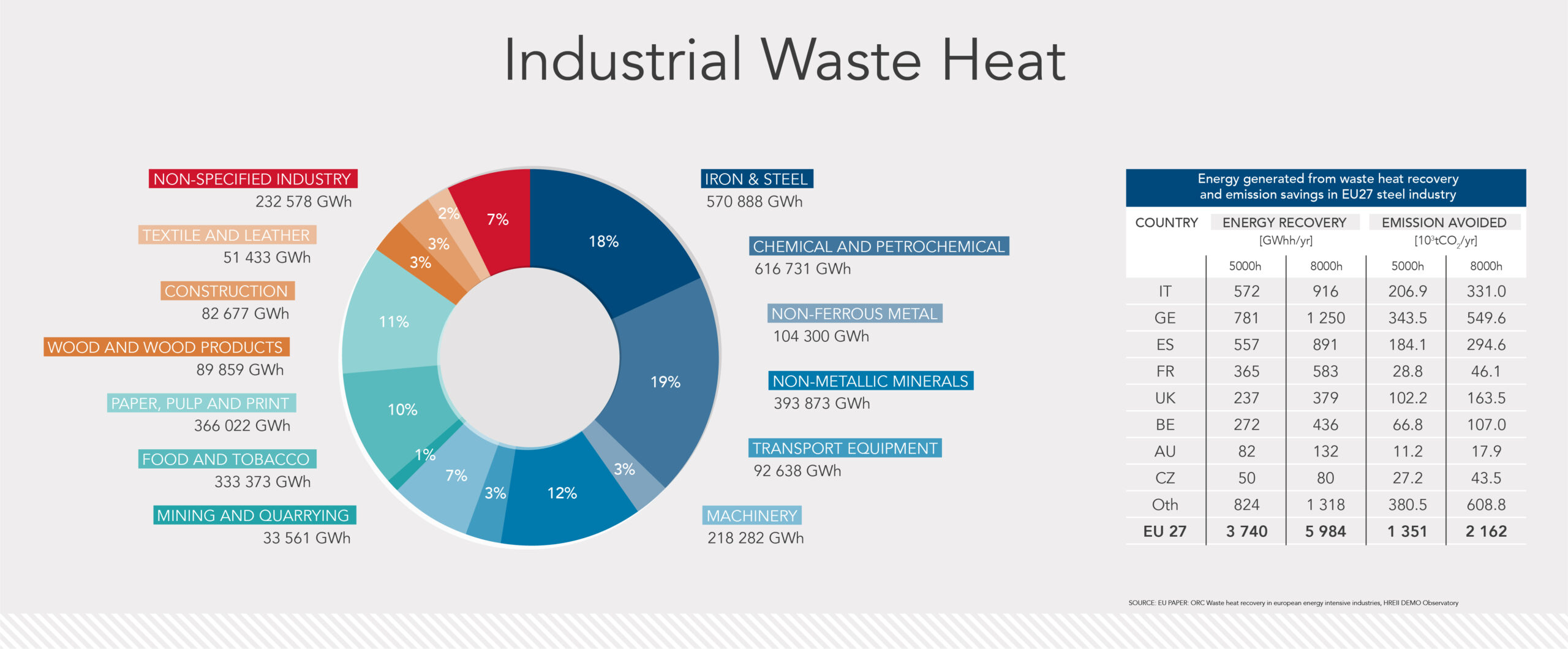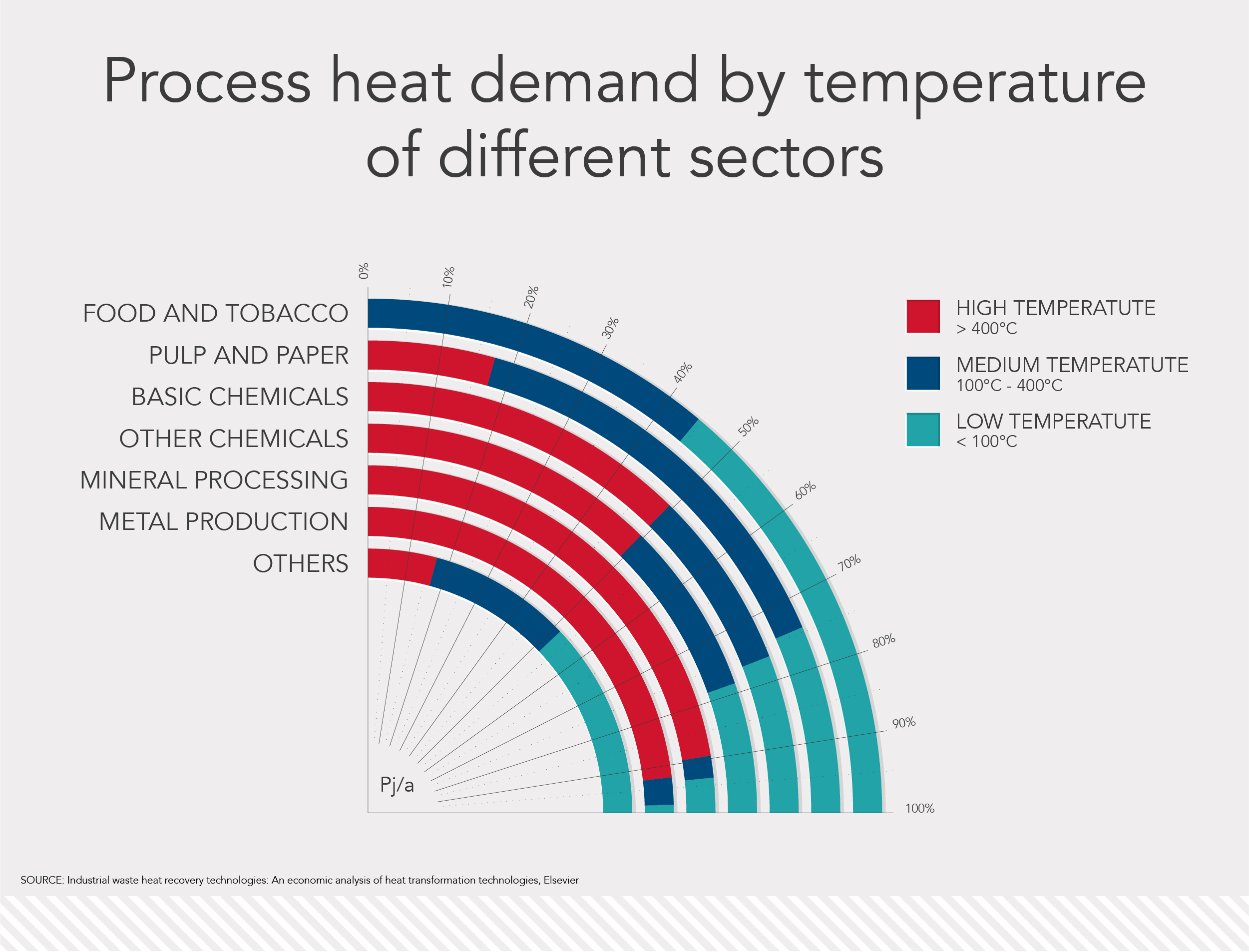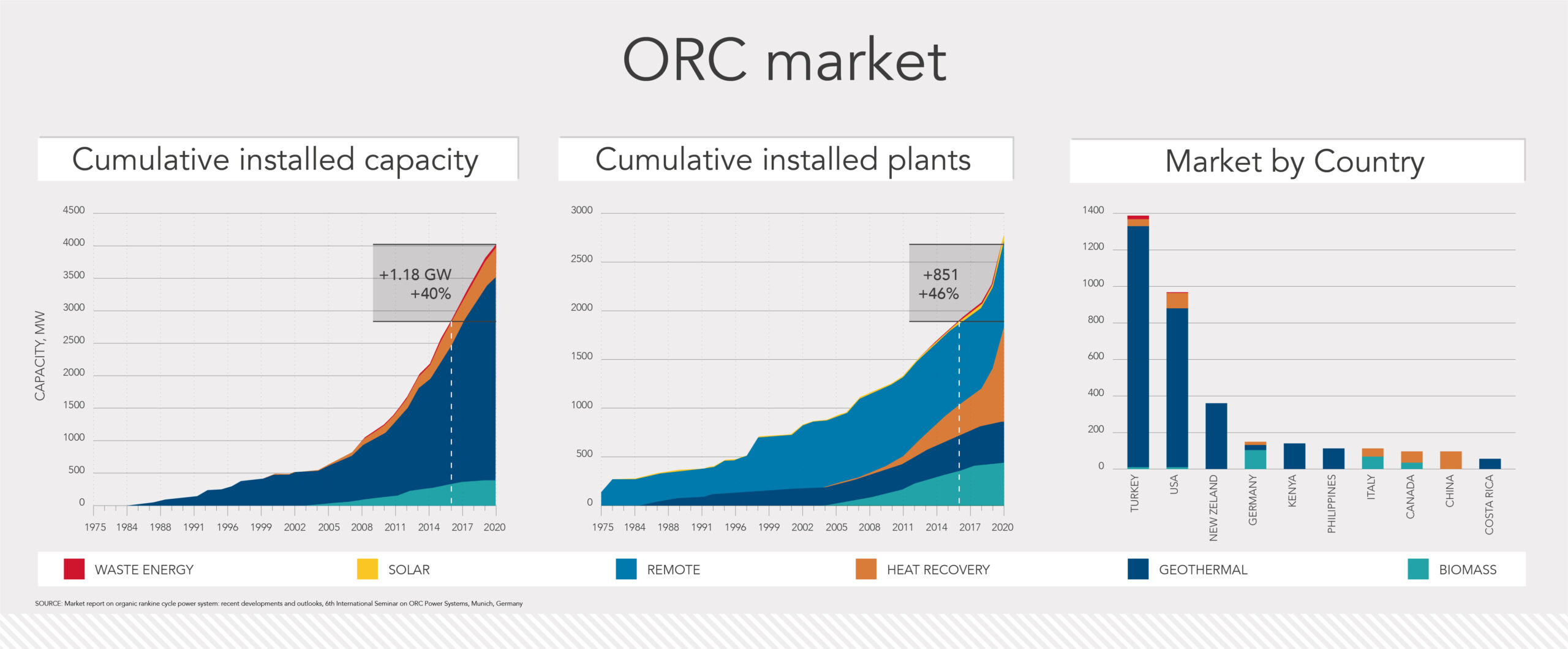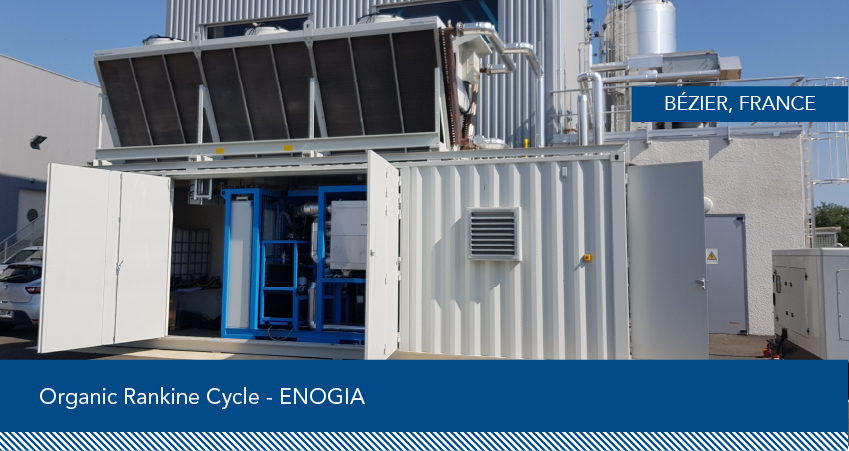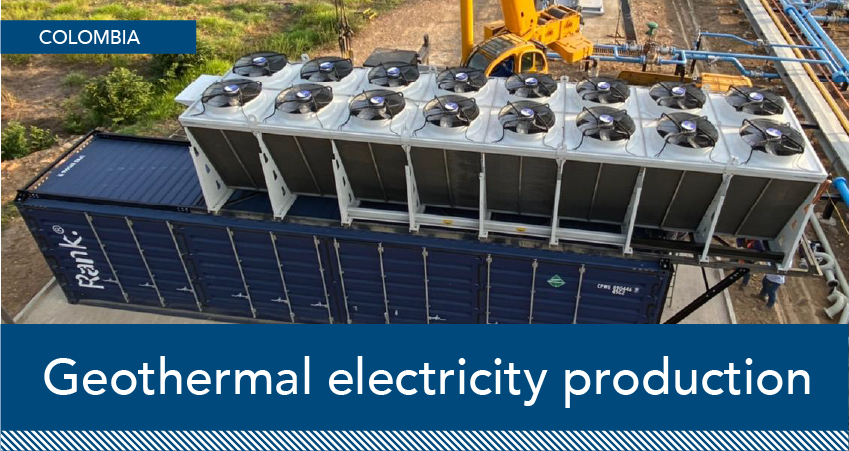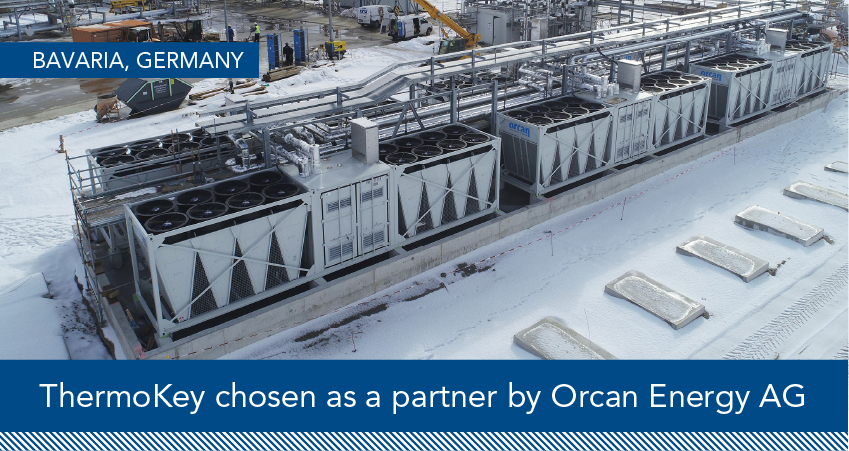Energy impact
12% of global energy is used as useful energy, that is the energy that can actually be used by the end user. This happens because every plant can cause energy losses during production, distribution, emission and regulation phases.
In Italy, only regarding the industrial market there is an energy waste equal to 27 TW / h per year, comparable to the average annual consumption of 450,000 families made up of 4 people2.
Nowadays waste heat represents between 25 and 50% of global energy consumption1.
Heat Recovery New Solutions
What is waste heat
Wherever there are material and goods manufacturing processes, there are units which, when operating, produce waste heat released by radiation, cooling fluids, exhaust gases or air.
Sources of waste heat in industry can be furnaces, waste water from washing processes, drying or cooling processes, but also refrigeration systems or the exhaust air from production plants.
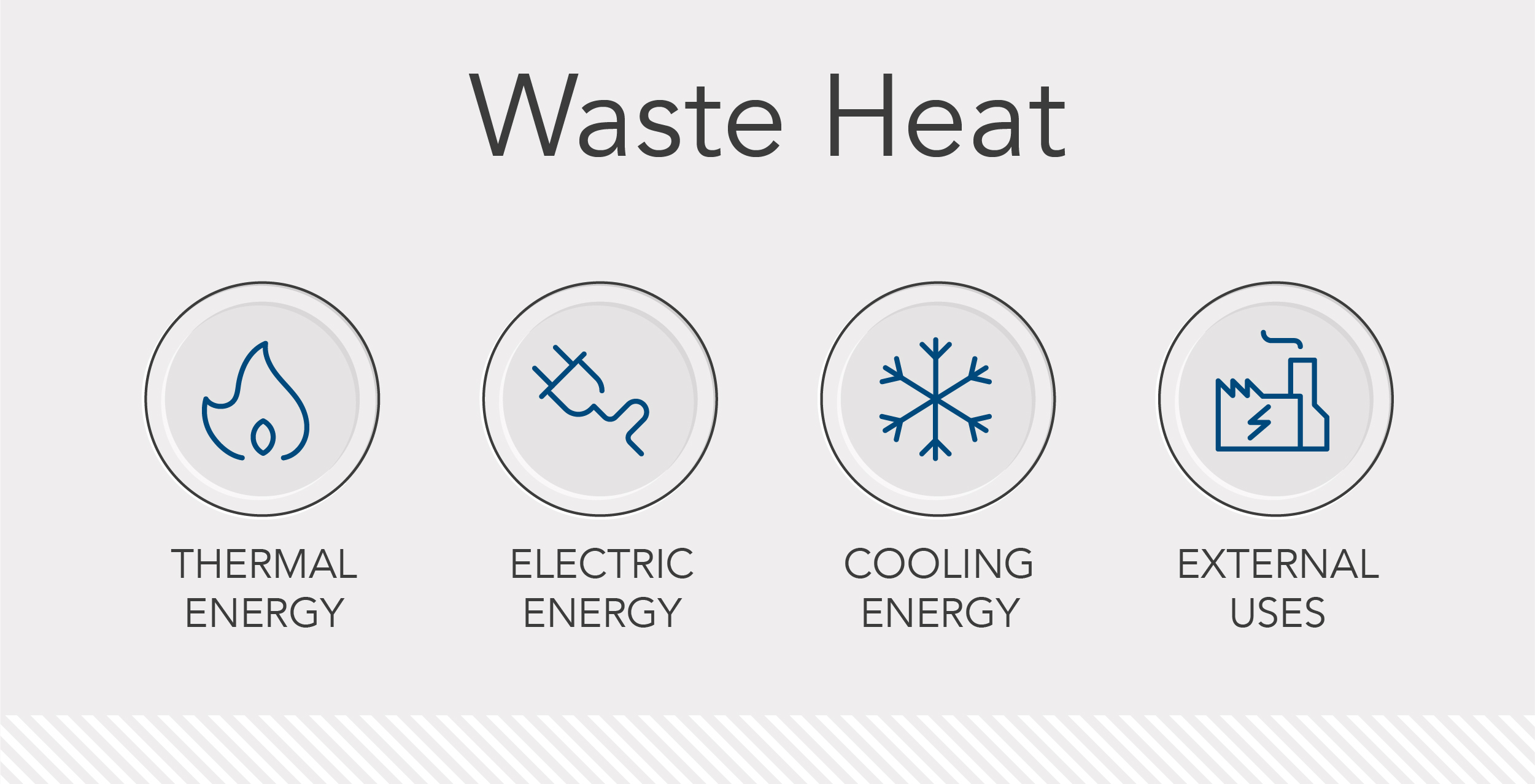
The industrial market is the one with the highest proportion of recoverable heat, although it is not the one characterized by the greatest availability of waste heat.
Each industrial market has different manufacturing processes that determine specific quantities and methods of generating waste heat, consequently also the potential of waste heat is always referred to a specific industrial sector.
The largest quantities of waste heat are generated by the food and tobacco industries, followed by: pulp and paper processing, base metals, chemical industry and non-metallic minerals.
Industrial Waste Heat
The temperature is one of the most important criteria when considering if the industrial process could produce valuable waste heat that could be converted into energy. Generally speaking high temperature waste heat produced by processes above 400 °C has a better chance of being reused. Medium temperature applications range between 100 and 400 °C, whereas low temperatures are below 100 °C.
How to reduce the environmental impact
In addition to the increased production of photovoltaic and wind energy, the use of reliable heat sources at low and medium temperatures is a fundamental element in order to achieve the current climate goals pursued globally.
To act on the environmental impact at an industrial level, there are two possible solutions that allow you to increase the efficiency of cooling systems:
- Development of more efficient technologies
- Implementation of existing technologies through the development of tools and methodologies for optimization and efficiency
ORC (Organic Rankine Cycle)
The Organic Rankine Cycle (ORC) is a key technology in this regard, which by means of a system based on a closed thermodynamic cycle, allows to recover part of the waste heat produced by industrial processes by the transformation of high temperatures into electricity, which is then reused for the same production site.
This process translates into the advantage of producing electricity locally remotely by the transformation of waste heat also in areas not accessible by electricity networks (for example petrochemical plants, mines, etc.).
The economic benefits for companies that have made investments in ORC plants come from the reduction in electricity consumption, without any additional use of primary energy.
At the end of 2020 the total capacity of the ORC plants was 4.07 GW. Since 2016, the overall ORC market has increased by 40% (+1.18 GW) in terms of capacity and by 46% (+851) in terms of installed plants.
At an European level an assessment of the potential generation of electricity with this technology has been carried out. The industrial processes considered are: production of clinker in the cement industry, electric arc furnaces (EAF) and reheating furnaces for hot rolling mills in the steel industry, furnaces for flat glass and gas turbines in the gas transmission and storage sector. A theoretical potential of approximately 2.5 GW of ORC gross power has been estimated. The heat source is provided by the industrial process, which operating hours depend on the market fluctuations. Considering 8,000 operating hours per year ORC plants can generate nearly 20 TWh of electricity. This value represents 4.8% of the total electricity consumption of the EU industry in 2009 and it means that almost 7.5 million tonnes of carbon dioxide emissions have been avoided.
Heat Recovery New Solutions
The development of Air condensed ORC technology
An evolution of this technology is the Air condensed ORC, which plans to integrate a remote condenser at the end of the ORC cycle that allows heat to be dissipated.
ThermoKey is working precisely on this specific technology by the development of new integrated solutions with microchannel units, which are more efficient than traditional ORCs. The installations of these systems carried out so far have shown that ThermoKey solutions, in addition to being modular and scalable, are cheaper than traditional dry coolers and ORCs, also having lower installation costs.
References
Co-engineering 6 customized microchannel condensers, developed for ORC applications. Thanks to the low pressure drop on the refrigerant circuit and on the air side, electricity consumption of the ORC unit are minimized and electrical efficiency can be maximized.
Microchannel units allow a small footprint, a low weight and a modular design of the system.
Heat Recovery New Solutions
1) Fonte: A. Firth, B. Zhang e A. Yang; Quantification of global waste heat and its environmental effects ; Applied Energy, vol. 235; pp. 1314-1334; 2019.
2) https://www.vivienergia.it/casa/vivipedia/guida-energia/consumo-medio-energia-elettrica
-
Thermokey supplied Rank with 2 Turbo-J condensers for Geothermal electricity production in Colombia.
-
ThermoKey has been chosen as a partner of Orcan Energy AG Germany for the production of 6 customized microchannel condensers
-
ENOGIA turned to ThermoKey for the cooling of the ORC which enhances the exhaust fumes of the Béziers incinerator in France

